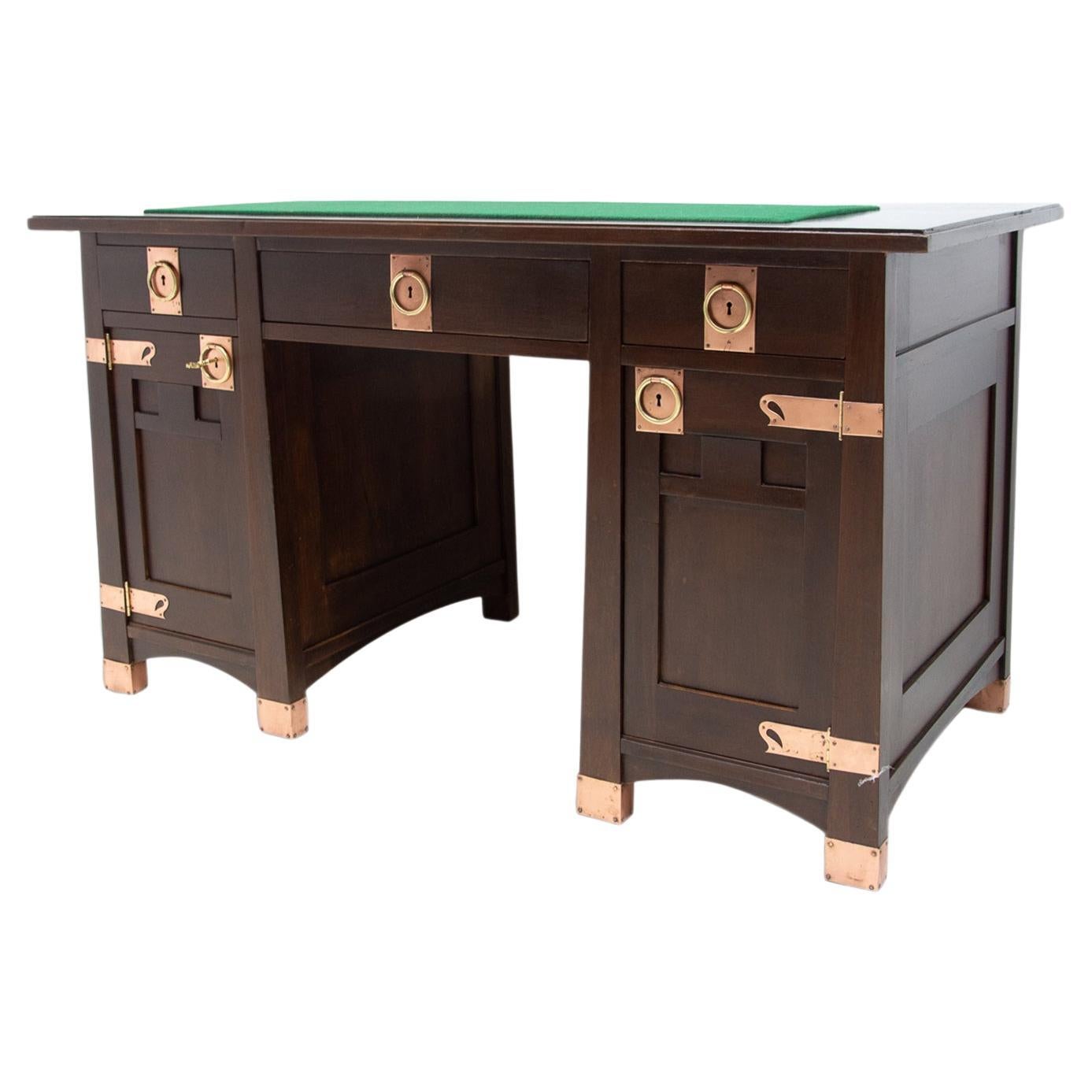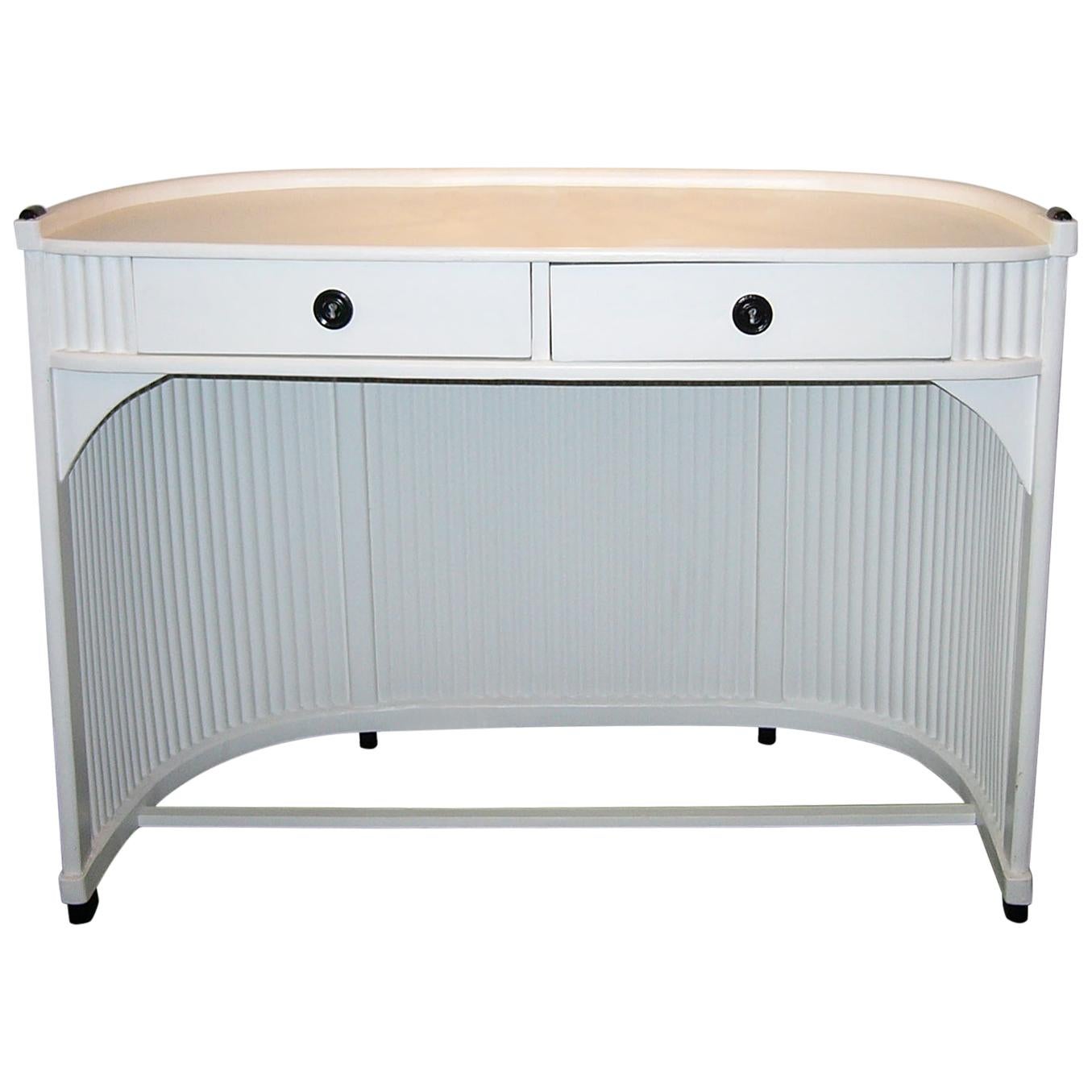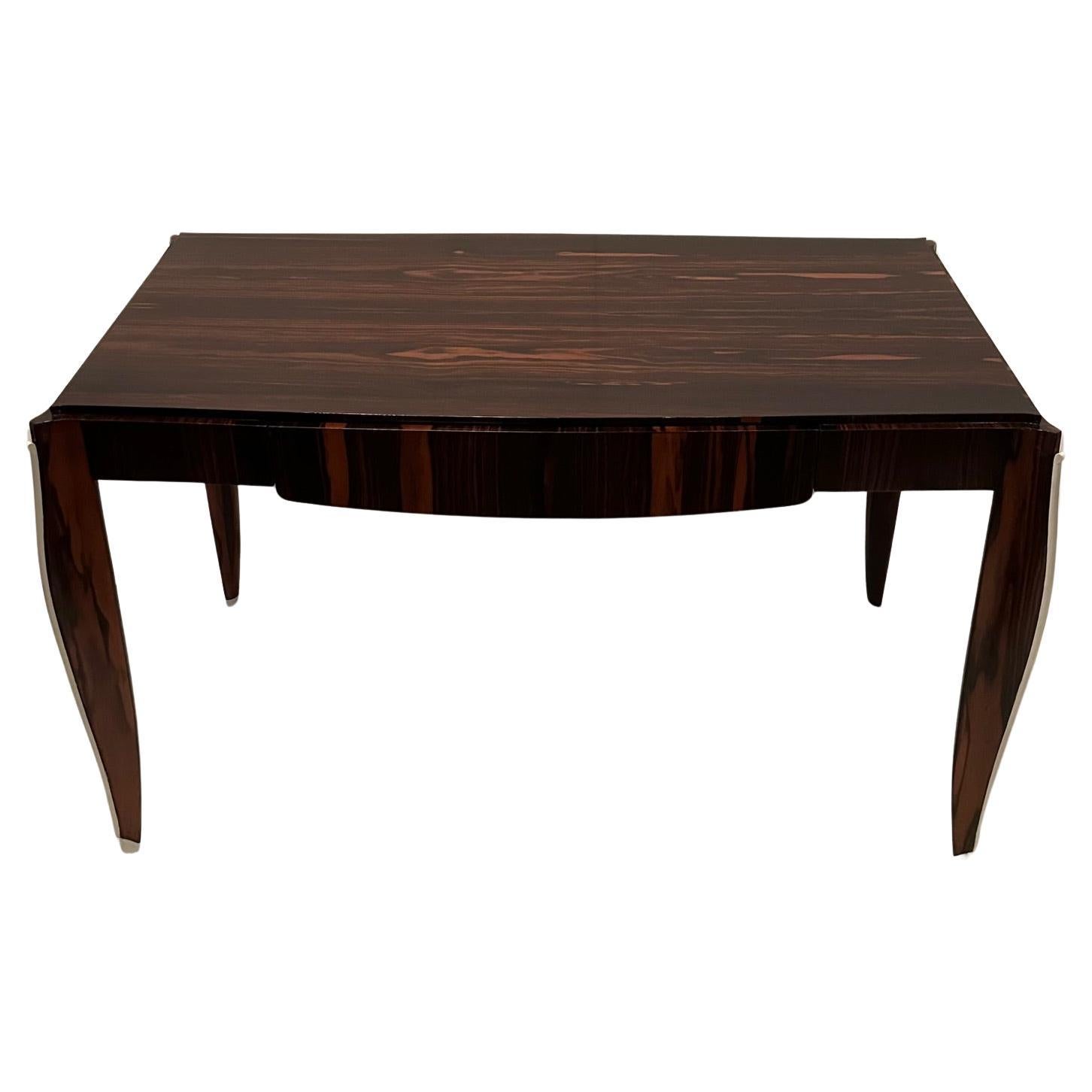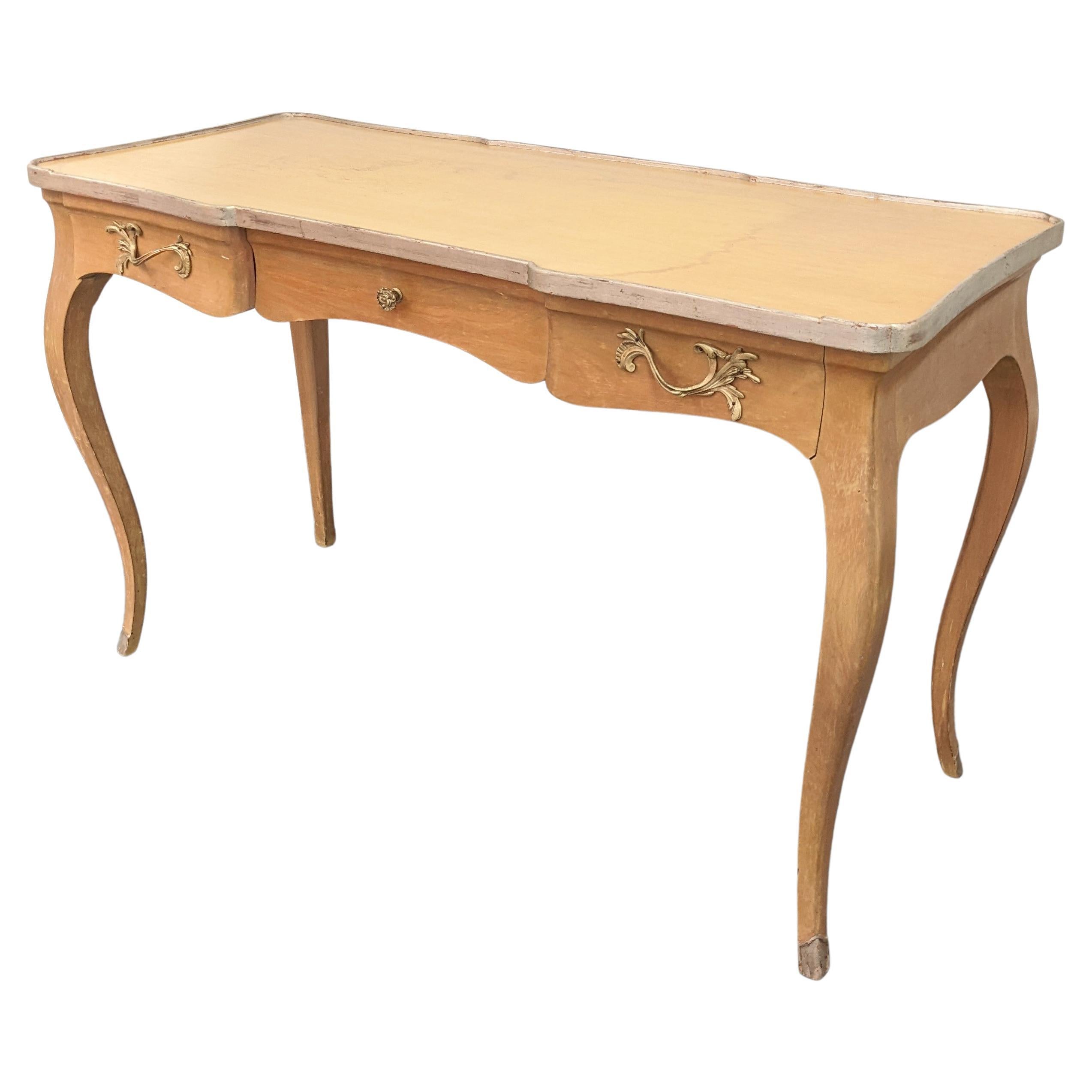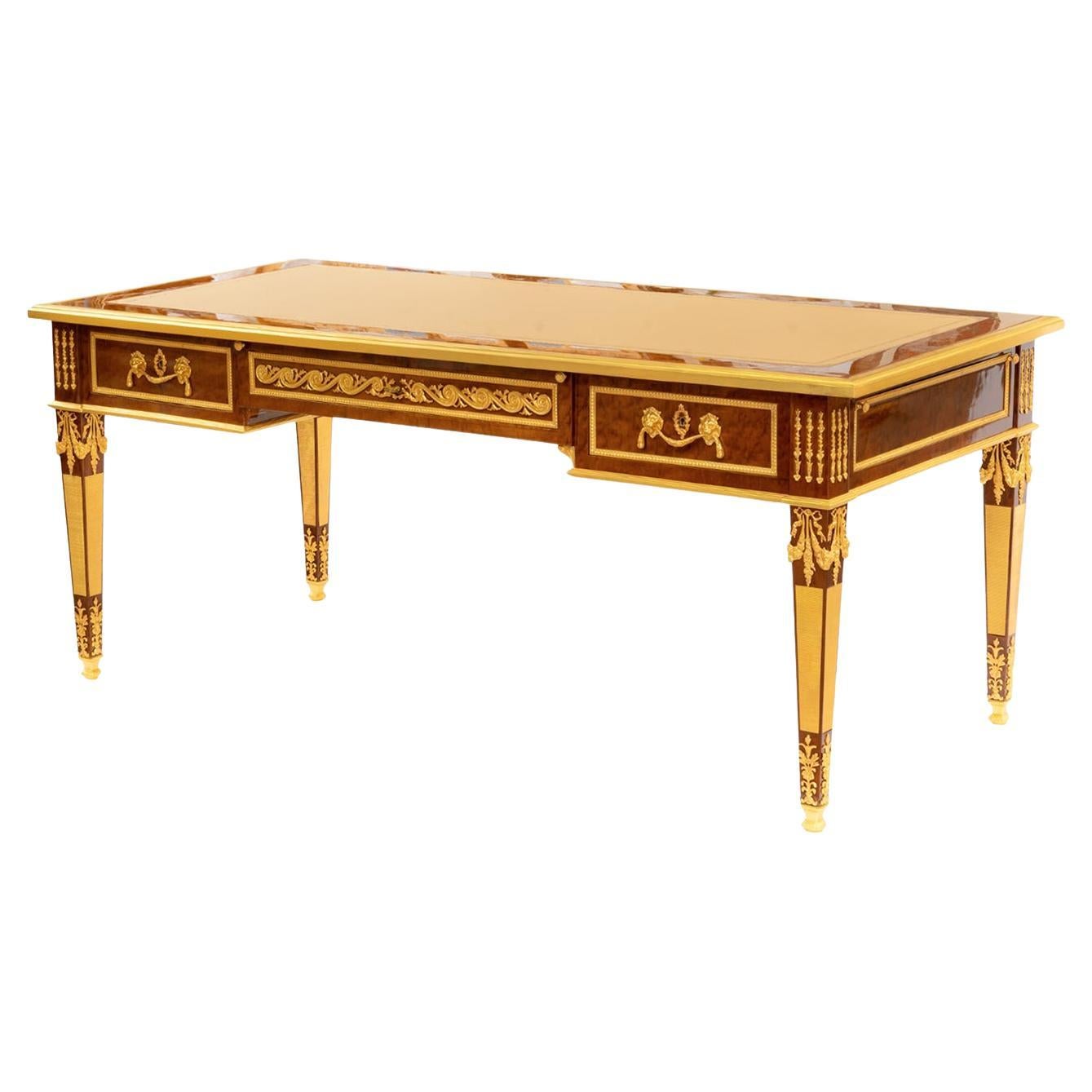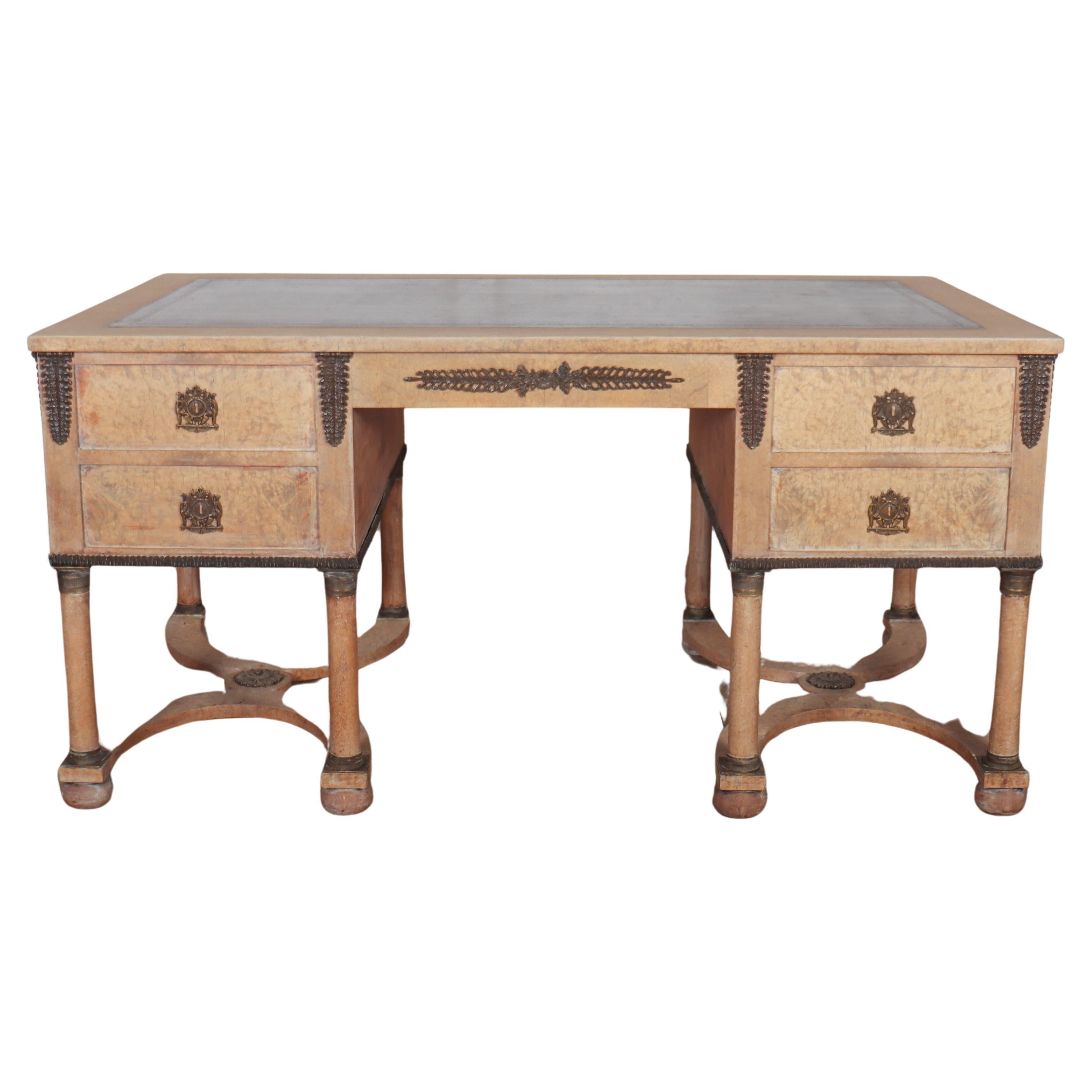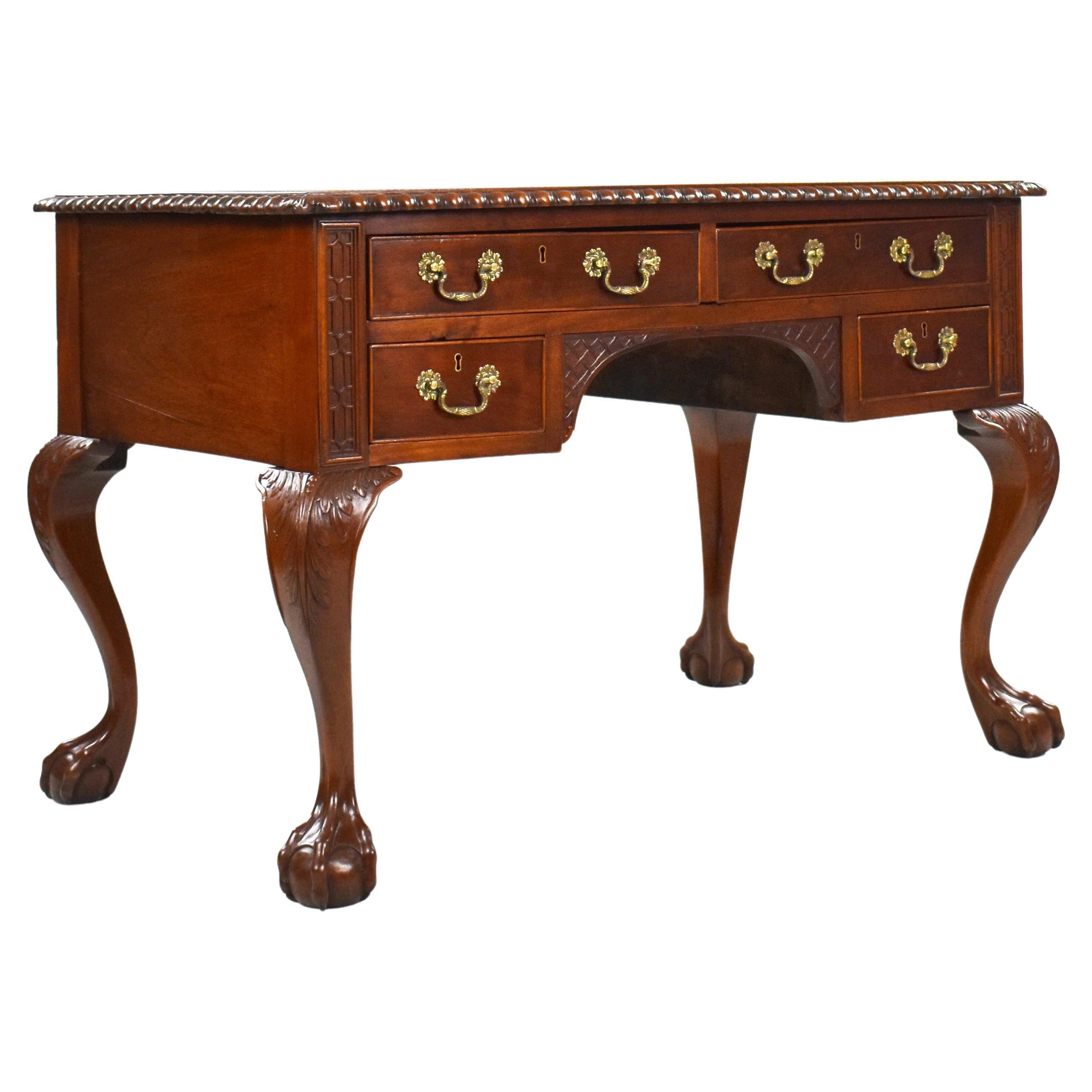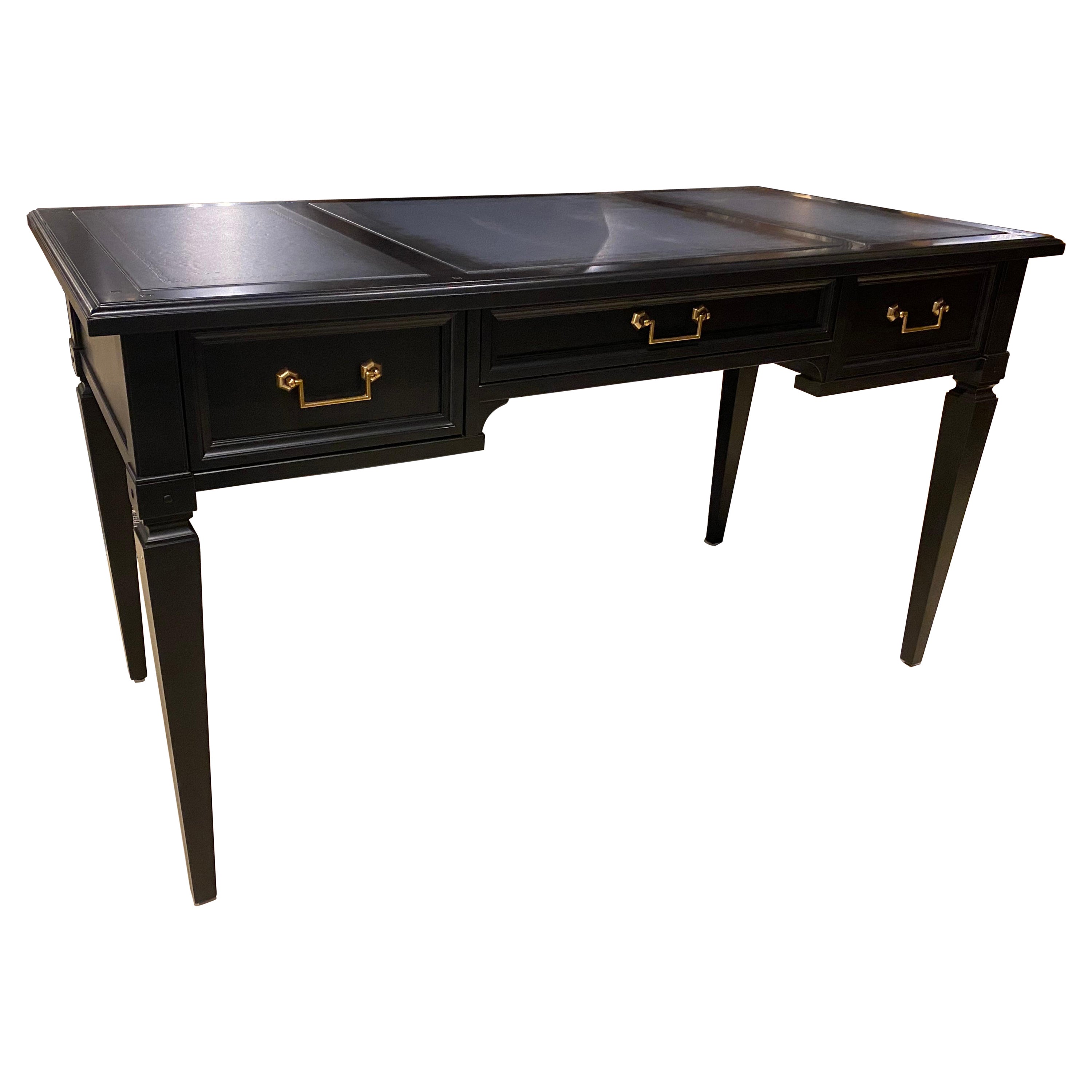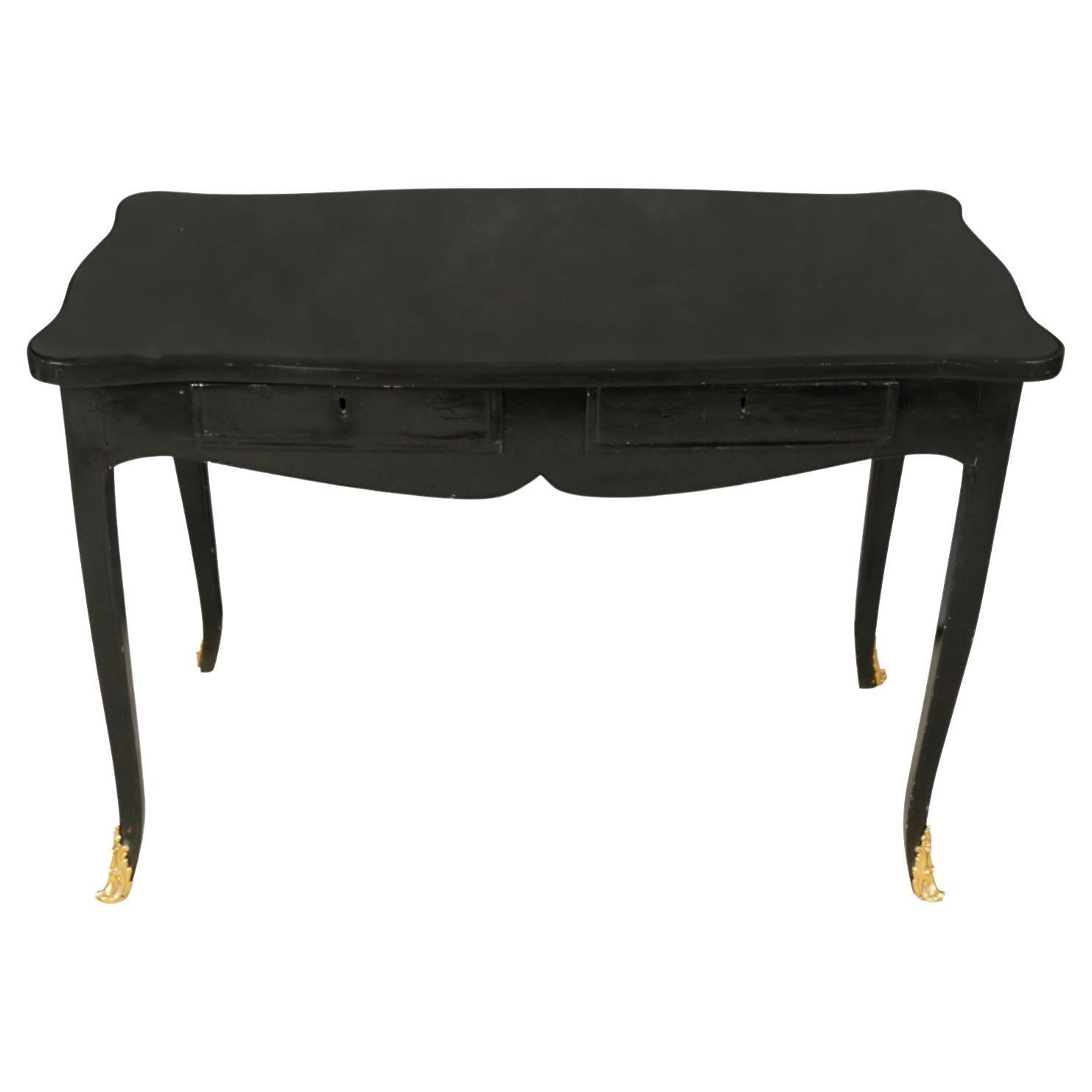
Viennese Secession Style Writing Desk, Kolo Moser
View Similar Items
Viennese Secession Style Writing Desk, Kolo Moser
About the Item
- Creator:Jacob & Josef Kohn (Manufacturer),Koloman Moser (Designer)
- Dimensions:Height: 40.95 in (104 cm)Width: 45.67 in (116 cm)Depth: 21.26 in (54 cm)
- Style:Art Deco (Of the Period)
- Materials and Techniques:
- Place of Origin:
- Period:
- Date of Manufacture:Vienna, 1902
- Condition:Wear consistent with age and use.
- Seller Location:Vienna, AT
- Reference Number:Seller: 106721stDibs: LU9813807404
Koloman Moser
Born in Vienna in 1868, Koloman Moser briefly attended trade school, honoring his father’s wish to see him in commerce. But he soon surrendered to his artistic inclinations, enrolling in 1885 in Vienna’s Academy of Fine Arts, where he studied painting.
When his father died unexpectedly in 1888, leaving the family in financial straits, Moser (1868–1918) helped out by doing illustrations for books and magazines. Meanwhile, he continued his painting studies, at the academy and then at the School of Arts and Crafts, starting in 1892. That was also the year that Moser, along with other young artists revolting against the Viennese art world’s devotion to naturalism, formed the Siebner Club, the precursor to the Vienna Secession.
Moser’s introduction during his last term at school to Gustav Klimt’s Allegory of Sculpture proved a turning point for the young artist. Christian Witt-Dörring, guest curator of the 2018–19 exhibition “Koloman Moser: Universal Artist between Gustav Klimt and Josef Hoffmann” at the MAK in Vienna, noted a change in the artist’s drawing style. “Primarily inspired by the art of Japan, [Klimt] introduces new paper sizes, fragmented image details, and an emphasis on the line as opposed to the surface,” wrote Witt-Dörring in the exhibition’s catalogue.
A year later, in 1897, Moser together with Klimt, Carl Moll, Joseph Olbrich and Josef Hoffmann founded the Vienna Secession, a union of artists and designers determined to upend Austria’s artistic conservatism. The members were committed to making total works of art: Gesamtkunstwerken. Looking to the English Arts and Crafts Movement, with its guiding principle of unity of the arts, the group attempted to bring art back into everyday life and introduce a local modernism to fin-de-siècle Vienna. Moser, whose membership in the club also afforded him entry into upper-class Viennese society, turned his back on oil painting and forged ahead with Gesamtkunstwerk.
Moser created everything from exhibition design to facade ornamentation for the Secession Building, to graphic materials. Moser also produced posters and advertisements in his “modern style” for various companies. In 1898, he presented his first decor pieces, including hand-knotted rugs and cushion covers. In 1899, Moser began what would become a lifelong professorship at the School of Arts and Crafts. His repertoire now expanded to include furniture, ceramics and patterns like his trademark checkerboard design. He also moved into scenography and fashion and established himself as an interior designer.
The artist decorated his own home in 1902, after which he received a series of important commissions, notably the villa of textile industrialist Fritz Waerndorfer. It was Waerndorfer who provided the financial support that enabled Moser and Hoffmann in 1903 to found the Wiener Werkstätte, a platform for fully realizing their ideal of Gesamtkunstwerk. Two years later, Moser married Edith Mautner von Markhof, the daughter to one of Austria’s great industrial barons, and his work thrived.
In 1907, the Wiener Werkstätte ran into financial trouble. Losing faith in the unity of the arts and disillusioned with the group’s dependency on wealthy patrons like Waerndorfer, Moser left the Werkstätte. He returned to his original discipline, painting, which he continued to practice until his untimely death from cancer, in 1918.
Today, Koloman Moser’s work, from his metal vases to his jewelry to his interiors, remains sought-after and revered. Browse Moser's radically modern creations at 1stDibs.
Jacob & Josef Kohn
While the first name that comes to mind when thinking of bentwood furniture might be Thonet (maker of the iconic Thonet No. 14 chair or “bistro chair”), Michael Thonet and his subsequent studio, the Gebrüder Thonet (Thonet Brothers), had a strong competitor in 19th-century Vienna: Jacob & Josef Kohn (also referred to as J. & J. Kohn).
Founded in 1849 by a father and son with the motto “Be one step ahead,” Jacob & Josef Kohn created modern furniture for indoors and out from Austrian beech. At the turn of the 20th century, after establishing itself with mastery of everything from chairs to coatracks and even doll furniture, J. & J. Kohn began working closely with the Wiener Werkstätte, the artisan cooperative cofounded by Austrian architect and designer Josef Hoffmann (Gustav Klimt and Koloman Moser were also members). Through this partnership, J. & J. Kohn produced an array of furniture in bentwood, cane and upholstery, which it sold through showrooms across Europe and North America. Its designs throughout the first decade of the 20th century reflect the Art Nouveau movement that was quickly gaining traction across Europe.
Price wars and mergers ensued during the First World War. Changes in the organizational structure of Thonet included a merger with Viennese company Mundus in the early 20th century, which followed Mundus’s becoming a majority stakeholder in J. & J. Kohn — these mergers yielded the formation of Mundus-Kohn and later, in 1922–23, Thonet-Mundus. The new conglomerate went on to produce examples of its bentwood furniture in keeping with the modern style of the Vienna Secession. While Thonet rebuilt, rebranded and expanded in the United States and elsewhere after World War II, J. & J. Kohn never produced furniture under that name again.
On 1stDibs, find a variety of antique J. & J. Kohn furniture including bentwood wingback chairs designed by Josef Hoffmann and other seating, side tables, beech nesting tables and more.
- Early 20th Century Viennese Secession oak writing deskLocated in Prague 8, CZThis luxurious-looking Art Nouveau writing desk was made in about 1910 in the former Austria-Hungary. It is made of oak wood. The table top is covered with green plush in the front. ...Category
Early 20th Century Austrian Art Nouveau Desks and Writing Tables
MaterialsMetal
$3,964 Sale Price30% Off - Viennese Secession Brass Plant Stand with Solid Oak Top Kolomon Moser StyleBy Koloman MoserLocated in Lisse, NLNot perfect, but rare and practical Viennese plant stand. This stylish, metal and brass plant stand or occasional table is a joy to own and look at. Although it is as stabile as the...Category
Early 20th Century Austrian Vienna Secession Pedestals
MaterialsBrass
- Hans Gunther Reinstein Vienna Secession Ladies Writing DeskBy Hans Gunther ReinsteinLocated in Berlin, DEVienna secession ladies writing table in softwood and corrugated cardboard. Black and white paint renewed. Designed by Hans Günther Reinstein ( 1880-...Category
Early 20th Century Austrian Vienna Secession Desks and Writing Tables
MaterialsSoftwood
$3,352 Sale Price36% Off - Elegant French Deco Style Writing DeskLocated in Hopewell, NJSophisticated French Deco style rosewood veneer writing desk having gorgeous silhouette and unusual white lacquer trim on the legs and feet as well as single drawer. Finished front ...Category
Vintage 1970s French Art Deco Desks and Writing Tables
MaterialsRosewood
- Régence Style Marquetry Writing DeskLocated in Brighton, West SussexA magnificent and very rare Régence style marquetry inlaid grand bureau plat or writing desk. Inscribed to the carcass 'Moreaux 72'. Dating from the second half of the nineteenth century this magnificent and very rare bureau plat has finely cast rocaille gilt-bronze mounts and is decorated overall with truly breath-taking seventeenth century marquetry, depicting fantastical townscapes, knights, soldiers, hunting and architectural-scenes. Of serpentine rectangular form the top is veneered with superb marquetry panels within a foliate scrolled border and a rocaille shell-cast gilt-bronze surround, both sides featuring a recessed central drawer flanked on each side by a drawer applied with male and female terms, scrolled handles, and reserves with conforming drawers; the bombé sides are centred by foliate scrolls, and the whole raised on cabriole legs headed by cartouches with foliate entwined chutes terminating in scrolled sabots. Of impressive scale this fine bureau plat, in the manner of a partners desk, features working drawers to each side. This model of bureau plat was made by a small number of celebrated Parisian cabinet makers in the second half of the 19th century including Beurdeley, Cremer and Befort Jeune. It is incredibly rare to see this model of bureau plat inlaid in marquetry. The exceptional quality and style indicate the use of older reused marquetry, almost certainly dating from the late 17th century and originating from the Augsburg region of Germany. Similar models but lacking the exceptional marquetry inlay can be found in the collection of the Duke of Buccleuch at Bowhill, and the Earl of Normanton at Somerlely. Christopher Payne notes that the latter was part of a pair sold by the London dealer Toms & Luscombe in 1871. He illustrates the present bureau plat in his book ‘European Furniture of the 19th Century’ (p. 88-89), along with two related desks minus the marquetry inlay (p. 92 -93). The exceptional and highly complex marquetry inlay and intarsia work, that sets this important bureau plat apart from other extant examples, would originally have formed the decorative panels of a late 17th century table cabinet, almost certainly ascribable to the Augsburg region of Germany. Augsburg emerged from the middle of the 16th century as the German centre of luxury cabinet making for the international market. In particular, the development of marquetry contributed to this prominent position, favoured by the ready availability of indigenous woods and the reputation that Augsburg had the best craftsmen able to cut thin layers of veneers in the most intricate motifs (C.S. Wood, ‘The Perspective Treatise in Ruins: Lorenz Stöer, Geometria et perspectiva, 1567’, Studies in the History of Art, no. 59, p. 246). Table cabinets, conceived as a form of Wunderkammer or cabinets of curiosities, were intended as repositories for all manner of wondrous and exotic objects and by the 1550s the grandest cabinets in Europe were being made in Augsburg. Decorated almost entirely with sumptuous marquetry, often depicting perspective views of ruins and fantastical townscapes, they become by the 1590s highly regarded as important diplomatic gifts. Fine Augsburg marquetry panels remained popular throughout the ages and were frequently re-used to create or embellish new items of furniture, such as this magnificent bureau plat. Their inclusion was not only for their highly decorative appeal, but to contemporary eyes, a means by which to imbue a new creation with a sense of true historical authenticity. The importance of such panels is often reflected in the high cost involved in repurposing them. A fine example of this is the celebrated 17th century cabinet on stand...Category
Antique Mid-19th Century French Louis XV Desks and Writing Tables
MaterialsOrmolu
- Elegant French Style Writing DeskLocated in Riverdale, NYElegant French style writing desk with Louis XV lines in blond wood with silver leaf-painted table edge and feet. 3 drawers. Fitted g...Category
Vintage 1950s American Louis XV Desks and Writing Tables
MaterialsWood
